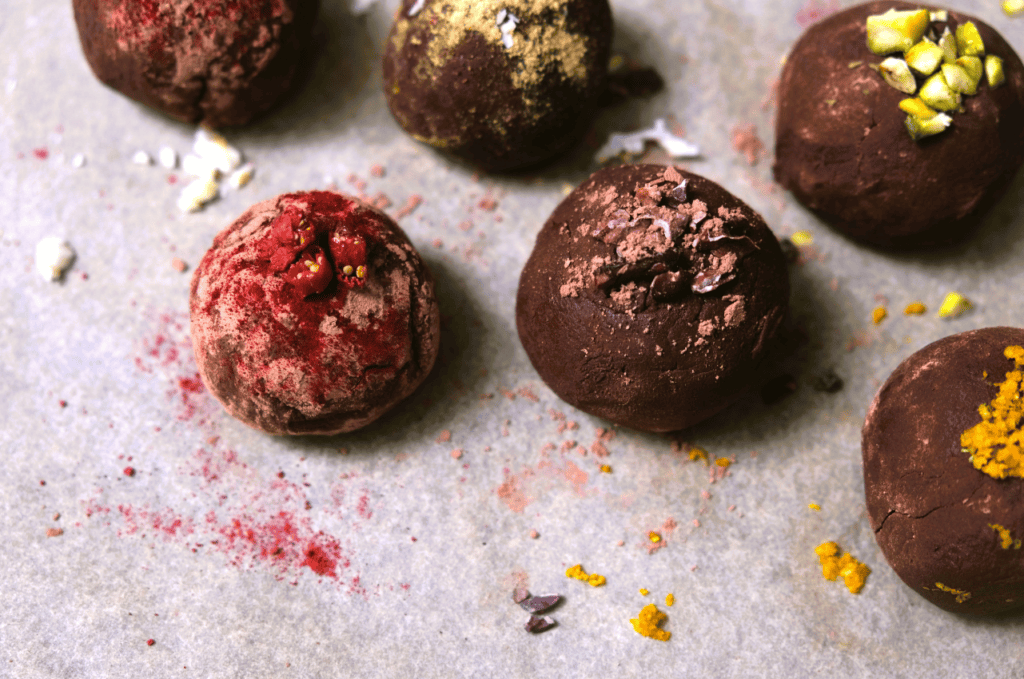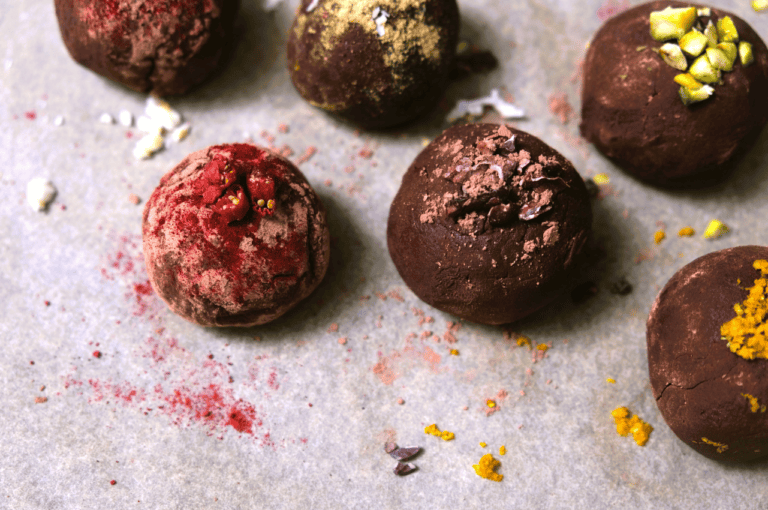Indulge in a guilt-free and decadent treat with these Avocado Truffles. They’re sure to be a crowd pleaser. Made with wholesome ingredients like ripe avocados, dates, cocoa butter, and cocoa powder, these truffles are not only delicious but also packed with nutritional goodness. With a creamy avocado base and rich chocolate flavor, each bite is a delightful experience for your taste buds. Great with a tea, chai, or late night sweet tooth craving, with easy-to-follow instructions, you can whip up a batch of these irresistible truffles in no time and impress your friends and family with your culinary skills!
Are Avocados Sustainable?
Avocados, a beloved ingredient in many dishes including these Avocado Truffles, present a nuanced perspective on sustainability, with both positive and negative aspects to consider. Let’s delve into the sustainability of avocados, considering both the positives and negatives, to better understand their role in our diets and the environment.
- Are avocados sustainable? Avocado production has both positive and negative impacts on sustainability. While avocado farming can be profitable for farmers and provide economic opportunities, concerns arise regarding water usage, carbon footprint, and deforestation associated with large-scale cultivation.
- How much water does avocado farming require? Avocado farming is water-intensive, requiring approximately 320 liters of water to produce just one avocado. This high water demand can strain local water supplies, particularly in regions already facing water scarcity.
- What is the carbon footprint of avocados? Avocado production contributes to carbon emissions primarily through transportation, with around 0.19 kilograms of CO2 equivalents emitted per avocado. However, compared to animal products like beef, avocados have a significantly lower carbon footprint.
- Can avocado waste be managed sustainably? Avocado distribution generates significant waste, including discarded fruit, peels, and seeds. Innovative solutions, such as biorefineries and upcycling initiatives, are emerging to address avocado waste and create value-added products, contributing to a more sustainable avocado industry.
Pros:
- Nutrient-rich fruit: Avocados are packed with essential nutrients, including healthy fats, fiber, vitamins, and minerals. They offer a range of health benefits and can contribute to a balanced diet when consumed in moderation.
- Water-efficient cultivation: Avocado trees are relatively water-efficient compared to some other fruit crops. They are well-suited to regions with semi-arid climates and can thrive with minimal irrigation in suitable growing conditions.
- Supports livelihoods: Avocado farming provides employment and income for millions of people worldwide, particularly in regions where avocados are a significant agricultural commodity. Small-scale farmers rely on avocado cultivation as a source of livelihood and economic stability.
Cons:
- Water usage concerns: While avocado trees are relatively drought-tolerant, commercial avocado cultivation can still be water-intensive, particularly in regions where water resources are scarce or overexploited. Excessive irrigation practices in some avocado-growing regions have raised concerns about water scarcity and environmental sustainability.
- Land use and deforestation: The expansion of avocado cultivation, especially in regions like Latin America, has led to deforestation and habitat loss in some areas. Clearing land for avocado orchards can have negative impacts on biodiversity, soil health, and ecosystem stability.
- Transportation and carbon footprint: Avocado production often involves long-distance transportation to reach consumer markets, contributing to carbon emissions and environmental pollution. This transportation footprint can offset some of the environmental benefits of avocado cultivation.
Despite these challenges, the sustainability of avocados can be enhanced through responsible farming practices, including water-efficient irrigation methods, agroforestry techniques, and reforestation efforts. You can support sustainable avocado production, such as sourcing from certified organic or Fair Trade farms, buying local rather than imported avocados, or better yet, grow your own! By making informed choices and supporting sustainable avocado farming, consumers can enjoy the nutritional benefits of avocados while contributing to positive environmental and social outcomes.
And with that little tit-bit of knowledge, let’s get back to the recipe!
Frequently Asked Questions:
- Can I make these truffles without cocoa butter? Yes, you can omit the cocoa butter if desired. While cocoa butter adds richness and helps bind the ingredients together, as well as adds firmness when it cools, you can still achieve delicious truffles using just avocados, dates, and cocoa powder. You could add in another binder like almond flour, ground walnuts, ground flax or chia seeds. Adjust the consistency as needed by adding a bit more cocoa powder if the mixture is too soft.
- How long do these truffles last? These Avocado Truffles can be stored in an airtight container in the refrigerator for up to 5-7 days. However, they are best enjoyed fresh within the first few days of making them.
- Can I substitute rum with another ingredient? If you prefer not to use rum or are making these truffles for children, you can omit it altogether. Alternatively, you can substitute rum with vanilla extract or almond extract for added flavor.
- Can I freeze these truffles? Yes, you can freeze these truffles for longer storage. Place them in a single layer on a baking sheet and freeze until firm, then transfer them to a freezer-safe container or resealable bag. Thaw in the refrigerator before serving.
Tips for the best Avocado Truffles
- Soak dates for easier blending: To ensure smooth blending, soak the dates in warm water for at least 10 minutes before using them in the recipe. This helps soften them and makes them easier to blend into a creamy paste.
- Chill the mixture before shaping: After blending the ingredients, refrigerate the mixture for at least 30 minutes before shaping it into truffles. Chilling helps firm up the mixture, making it easier to handle and shape into balls.
- Get creative for for coating: Roll the shaped truffles in cocoa powder for a classic and indulgent finish. You can also get creative and roll them in shredded coconut, chopped nuts, or cocoa nibs for added texture and flavor.
- Adjust sweetness to taste: Depending on the sweetness of your dates and personal preference, you can adjust the sweetness of the truffles by adding more or less cocoa powder. Taste the mixture before shaping the truffles and adjust accordingly.


Avocado Truffles
Ingredients
- 2 ripe avocados
- 12 dates (previously soaked for at least 10 minutes)
- 2 Tbsps cocoa butter (melted)
- 3 Tbsps cocoa powder + some more for coating
- 1 Tbsp rum (optional)
Instructions
- Add all ingredients in the blender and blend until a smooth paste is formed.
- Put in fridge for at least 30 minutes.
- Make the chocolate truffles using about 1 tsp of the composition per truffle.
- Coat them with cocoa powder.
- Serve right away or store them in the fridge.



